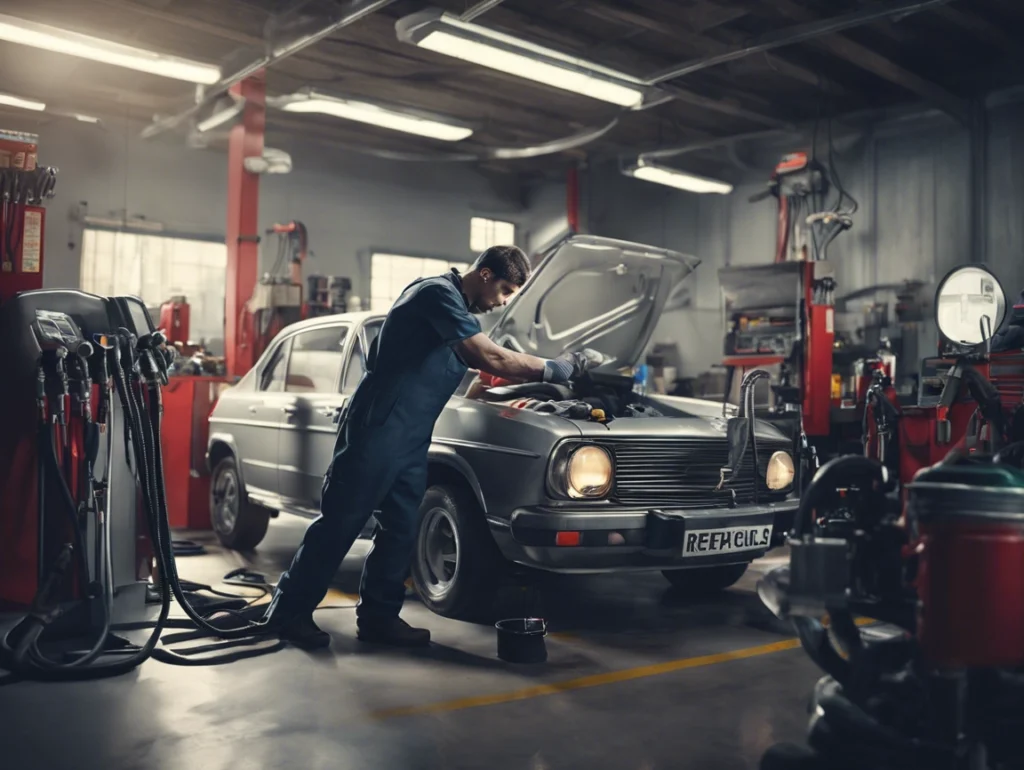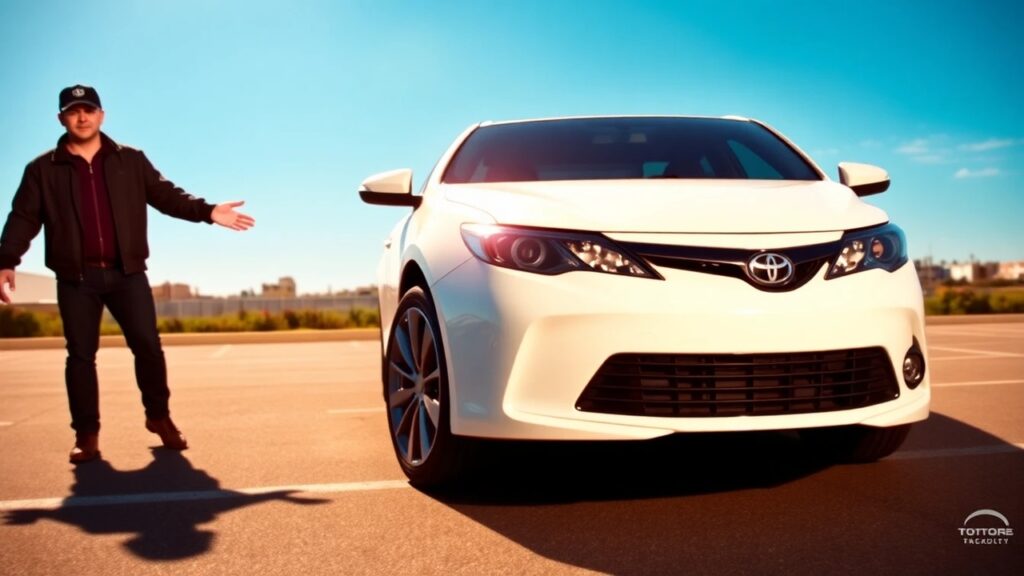Discover the Most Common Problems in Toyota Camry and Learn How to Fix Them
The Toyota Camry is one of the best-selling sedans worldwide, known for its reliability, fuel efficiency, and comfortable ride. While it enjoys a solid reputation, even a vehicle as dependable as the Camry can face issues over time. Understanding the common problems faced by Toyota Camry owners and how to fix them can help you stay ahead of expensive repairs and keep your car running smoothly.

The Toyota Camry is one of the best-selling sedans worldwide, known for its reliability, fuel efficiency, and comfortable ride. While it enjoys a solid reputation, even a vehicle as dependable as the Camry can face issues over time. Understanding the common problems faced by Toyota Camry owners and how to fix them can help you stay ahead of expensive repairs and keep your car running smoothly.
In this guide, we’ll dive into the most prevalent issues reported by Camry owners and offer clear solutions to address each one. If you’re a Camry owner, you’ll walk away knowing how to tackle some of these challenges and, most importantly, avoid major setbacks.
Problem: Transmission Issues
Symptoms:
One of the most frequent complaints from Toyota Camry owners, particularly in models from 2007 to 2011, is transmission failure or issues with shifting. Common signs include:
- Jerky or delayed shifting between gears.
- Strange noises when changing gears.
- Transmission slipping.
- Warning lights on the dashboard related to the transmission.
Cause:
These issues can be caused by a number of factors, such as low transmission fluid, worn-out clutches, or problems with the transmission solenoids. In some cases, faulty torque converters or malfunctioning sensors can also contribute to shifting problems.
Fix:
- Check Transmission Fluid: Start by checking the transmission fluid level and quality. Low or burnt transmission fluid can cause shifting problems. If the fluid is low, top it off, and if it’s burnt or dirty, perform a full transmission fluid change.
- Transmission Flush: If the fluid is excessively dirty, a transmission flush might be necessary. Flushing can help remove sludge and grime that hinder smooth operation.
- Inspect Transmission Solenoids: Solenoids control the flow of transmission fluid. A malfunctioning solenoid can cause shifting delays or failure. Testing and replacing faulty solenoids is a common solution.
- Rebuild or Replace Transmission: If the transmission itself is damaged or worn out, you may need to have it rebuilt or replaced. Rebuilding can cost between $1,800 and $2,500, while a full replacement could go as high as $3,000 to $4,000, depending on the extent of the damage and model year.
Problem: Excessive Oil Consumption
Symptoms:
Many Toyota Camry owners, especially those with models from 2007 to 2011, report excessive oil consumption. You might notice:
- The oil level dropping more quickly than expected.
- The need to top off oil frequently between oil changes.
- Blue smoke from the exhaust, indicating oil burning.
Cause:
The primary cause of excessive oil consumption in these models is worn-out piston rings, which allow oil to leak into the combustion chamber. This problem is more common in high-mileage vehicles, but some owners report it occurring as early as 70,000 miles.
Fix:
- Regular Oil Changes: Ensuring that you stick to the manufacturer’s recommended oil change intervals can help mitigate oil consumption issues.
- Use High-Mileage Oil: If your Camry has over 100,000 miles, switch to high-mileage oil. These types of oil are designed to reduce wear and tear on older engines, and they contain additives that help condition the seals.
- Repair Piston Rings: If the problem becomes severe, replacing the piston rings may be necessary. This is a major repair, costing anywhere between $1,500 and $2,500, depending on labor rates and parts costs. It involves dismantling the engine, so only opt for this if the oil consumption is causing significant problems.

Problem: Brake Problems
Symptoms:
Brake-related issues are one of the most frequent complaints from Camry owners, with some reporting problems as early as 20,000 miles. The most common symptoms include:
- A squeaking or grinding noise when braking.
- Vibration in the steering wheel or brake pedal when stopping.
- Longer stopping distances.
- Brake warning lights on the dashboard.
Cause:
Several components can lead to brake issues, such as worn-out brake pads, warped rotors, or air in the brake lines. If the brakes have been used extensively without regular maintenance, they may wear down quickly, especially in urban environments with heavy stop-and-go traffic.
Fix:
- Replace Brake Pads: The most common brake issue is worn-out pads. Replacing brake pads is a straightforward repair, costing around $150 to $300, depending on the type of pads you choose. Ceramic pads tend to last longer and produce less brake dust than semi-metallic pads.
- Resurface or Replace Rotors: Warped rotors can cause vibration during braking. Resurfacing the rotors is an option if the warping isn’t too severe, but replacing them might be a better long-term solution. Expect to pay between $250 and $500 for rotor replacement.
- Brake Fluid Bleed: Air in the brake lines can affect the hydraulic pressure needed for effective braking. A brake fluid bleed can remove the air and restore proper braking function. This service typically costs around $100 to $150.
- Regular Brake Inspection: Regularly inspecting your brakes and performing necessary maintenance can prevent brake problems from becoming a serious safety issue.
Problem: Suspension and Steering Issues
Symptoms:
Camry owners, especially those driving older models (2002–2006), often report issues with suspension and steering components. Symptoms include:
- Clunking noises when going over bumps.
- Uneven tire wear.
- Difficulty steering or excessive play in the steering wheel.
- Vibrations at high speeds.
Cause:
The most common causes of suspension and steering issues include worn-out struts, shocks, control arm bushings, or tie rods. Over time, these components degrade due to normal wear and tear, particularly if the car is driven on rough roads.
Fix:
- Replace Struts and Shocks: If you hear clunking noises or feel that the ride has become rougher, it may be time to replace the struts and shocks. Replacing these components typically costs between $600 and $1,000 for both front or rear sets.
- Replace Control Arm Bushings: Worn-out bushings can cause steering instability and uneven tire wear. Replacing the bushings can cost between $200 and $400, depending on labor rates and part prices.
- Tie Rod End Replacement: If there’s excessive play in the steering wheel or vibrations at high speeds, the tie rods may be the issue. Replacing tie rods costs between $100 and $250 per tie rod.
- Wheel Alignment: After replacing any suspension or steering components, it’s crucial to get a wheel alignment to ensure the vehicle tracks straight and to prevent premature tire wear. A typical wheel alignment costs around $75 to $150.
Problem: Electrical System Problems
Symptoms:
Electrical issues can crop up in the Toyota Camry, especially in models manufactured between 2007 and 2015. Some of the most common signs of electrical trouble include:
- The dashboard lights flickering or failing.
- Issues with power windows, door locks, or the sunroof.
- Battery draining quickly or the alternator failing to charge.
- Malfunctioning infotainment systems.
Cause:
Electrical problems often stem from faulty wiring, blown fuses, or a failing alternator. In some cases, it could also be related to a failing battery or corroded terminals.
Fix:
- Inspect and Replace Fuses: If you’re facing isolated electrical issues, such as problems with power windows or dashboard lights, check the fuse box first. Replacing blown fuses is a simple fix and typically costs only a few dollars.
- Check Battery and Alternator: If the battery is draining quickly, or you’re having trouble starting the car, the alternator might not be charging the battery properly. Replacing an alternator costs between $400 and $600. Alternatively, if the battery is simply old or worn out, replacing it costs around $100 to $200.
- Wiring Inspection: Faulty wiring or loose connections can cause various electrical problems. Having a technician inspect and repair the wiring may be necessary if you’re unable to isolate the issue yourself.
- Avoid Overloading the System: Using multiple high-power devices simultaneously (e.g., charging phones, running navigation, and using the infotainment system) can overload the electrical system, especially in older vehicles. Be mindful of what you’re running, and upgrade the electrical components if necessary.
Problem: HVAC System Failure
Symptoms:
Problems with the heating, ventilation, and air conditioning (HVAC) system are fairly common in Toyota Camry models. Owners report:
- The air conditioning not blowing cold air.
- Inconsistent temperature control.
- Weak airflow from the vents.
- Unusual noises when the HVAC is running.
Cause:
The cause of HVAC issues can range from a faulty compressor to a clogged cabin air filter or a failing blower motor. Refrigerant leaks are also a frequent issue in older vehicles.
Fix:
- Replace the Cabin Air Filter: A clogged cabin air filter can reduce airflow and affect the system’s overall performance. Replacing the cabin air filter is inexpensive, typically costing between $20 and $50.
- Recharge the Refrigerant: If the air conditioning isn’t blowing cold air, it might be due to low refrigerant levels. A simple recharge can resolve this issue, with costs ranging from $100 to $200.
- Replace the Blower Motor: If you notice weak airflow or strange noises, the blower motor may need replacement. This repair can cost between $200 and $400, depending on the labor involved.
- Check for Compressor Failure
